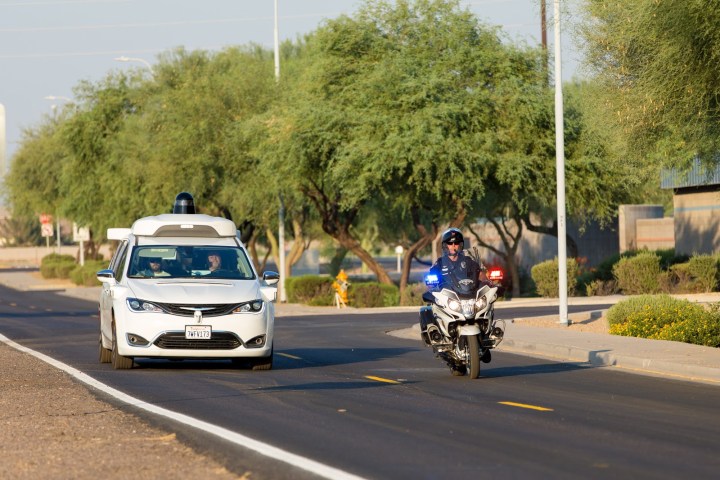
While the ability to discern an approaching emergency vehicle isn’t brand new technology for Waymo (per a recently published blog post, they have actually be working on that for years), in the last month, the Alphabet-owned company noted that it has been doubling down on its efforts lately. Thanks to a collaboration with the Chandler Police and Fire Department in Arizona, Waymo recently executed its first emergency vehicle testing day with the company’s new self-driving minivans.
“Throughout the day and into the night, our vehicles — equipped with a powerful suite of sensors — observed police cars, motorcycles, ambulances, firetrucks, and even a few undercover vehicles as they trailed, passed and led our self-driving cars,” the company wrote in a blog post. “As these emergency vehicles drove around, our sensors collected samples at various speeds, distances, and angles — all with the goal of building up a library of sights and sounds to help teach our self-driving cars to respond safely to emergency vehicles on the road.”
Per the latest tests, these autonomous vans are able to “hear” twice as far as was previously possible thanks to the cars’ new suite of sensors. Moreover, these sensors have made it possible to determine where the siren’s sounds are coming from, allowing the self-driving cars to make better decisions when it comes to their reactions. For example, one of these Waymo vehicles could pull over if it senses an emergency vehicle approaching from behind, or yield if it realizes that an emergency vehicle is coming from ahead.
So what exactly are these new sensors? All the technology is said to have been developed in-house, including custom audio detection and vision systems, as well as radars and LIDARS (Light Detection and Ranging). “These advanced sensors allow us to both reliably detect emergency vehicles in real time, and collect better information to train our software,” Waymo concluded. “That way, when we’re on the road, we can recognize an emergency vehicle even if we’ve never encountered it before (or if it appears differently because of the angle or lighting conditions).”


